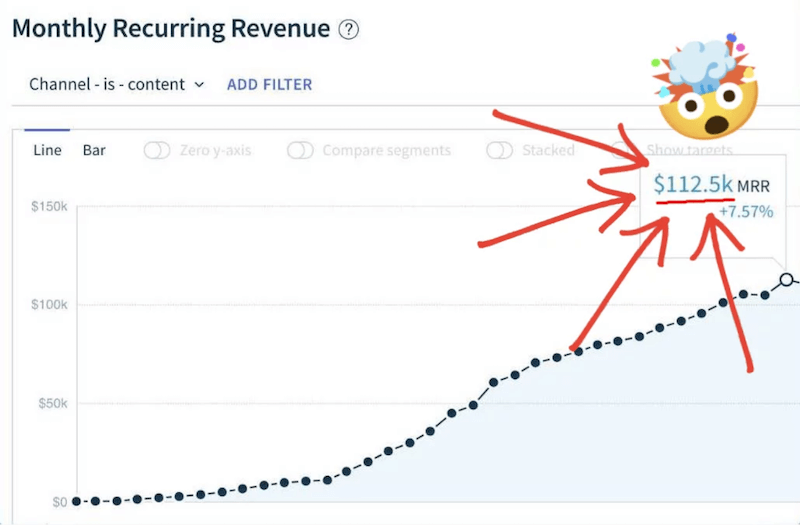What is a large language model?
Large language models are AI-powered digital wordsmiths that can create engaging content in an instant. Trained on vast text data, they understand grammar and context while mimicking human creativity. They revolutionize communication by breaking language barriers and offering endless possibilities for generating new content quickly. It's like having Shakespeare, Hemingway, and Rowling all rolled into one superpowered algorithm!
Large language model fast facts
OpenAI's GPT models, with their vast amount of parameters, exemplify the pinnacle of generative pre-trained large language models.
Google’s LLM, BERT, leverages its bidirectional training to deeply understand context.
Google's LaMDA represents the specialized direction of LLMs, aiming for more natural, flowing dialogue in AI interactions.
Despite the diversity of LLMs, OpenAI's GPT series remains a benchmark for accuracy and versatility in language model performance.
The right large language model for a task depends not on size alone but on its alignment with specific industry requirements and use cases.
Is GPT a large language model?
GPT, or Generative Pre-trained Transformer, is indeed a large language model. It's an AI powerhouse that has been making waves in the tech world due to its incredible ability to understand and generate human-like text. With each new version of GPT, we've seen significant improvements in performance. For instance, GPT-4 boasts 1.76 trillion parameters!
As a large language model, GPT has various applications across industries such as content creation, translation services, and even chatbot development. Its success can be attributed to the vast amount of data it's trained on by OpenAI — everything from books and articles to websites — which allows it to grasp context better than other models in the market.
However impressive this may sound, there are limitations to it as well. For example: while highly accurate at times when generating text based on given prompts, that can even fooling humans into thinking they're reading something written by another person, there might still be instances where generated responses lack coherence or factual accuracy due primarily to the fact that these models rely upon patterns found within their training datasets rather than truly understanding meaning behind words themselves, like us humans do so well naturally.

Graphic representation of a Large Language Model (LLM) showcasing the brain-like structure of neural networks and the colorful, intertwined data streams that feed into AI learning processes. Photograph: Celecia Johnson via ET Edge Insights.
What is the difference between LLM and AI?
When it comes to artificial intelligence (AI), think of it as the grand umbrella that covers a wide range of technologies and applications. AI is all about creating machines or software capable of learning, problem-solving, and decision-making based on data inputs.
As for large language models (LLMs), these are a specific type of AI that focuses on understanding and generating human-like text. LLMs like GPT have been trained on billions of parameters using massive amounts of textual data from various sources. They employ deep learning techniques such as transformer models with attention mechanisms to process input sequences efficiently.
So, in short, while AI encompasses an extensive array of tech marvels designed to mimic human intelligence across multiple domains, LLMs are specialized subsets that focus primarily on mastering natural language processing tasks.
What is the difference between NLP and LLM?
NLP, or Natural Language Processing, is a subfield of artificial intelligence (AI) that focuses on enabling computers to understand, interpret, and generate human language. It involves various tasks such as text analysis, sentiment detection, machine translation, and dialogue systems. NLP aims to bridge the gap between humans and machines by making communication in natural languages possible.
On the other hand, LLMs or Large Language Models are advanced AI models specifically designed for high-level NLP tasks. These models are trained on massive amounts of textual data using deep learning techniques like transformer architectures with attention mechanisms. LLMs can comprehend context better than traditional NLP methods due to their ability to process billions of parameters effectively.
What is generative AI vs large language models?
Generative AI is a branch of artificial intelligence that focuses on creating new content, such as images, text, music or even videos. It involves algorithms capable of generating outputs based on the patterns and structures they have learned from their training data. Some popular generative AI techniques include Generative Adversarial Networks (GANs), Variational Autoencoders (VAEs), and Recurrent Neural Networks (RNNs).
Large Language Models (LLMs) are a specific type of generative AI that specializes in understanding and producing human-like text. These models are trained using massive amounts of textual data to learn grammar, context, style variations, and other linguistic nuances. LLMs employ advanced deep learning techniques like transformer architectures with attention mechanisms to process input sequences effectively.

Conceptual illustration depicting various elements of artificial intelligence, including large language models. Photograph: ScribbleData.
What are the top 5 large language models?
Here are five notable LLMs that have been prominent:
- OpenAI's GPT: A titan in the LLM arena, GPT stands out for its exceptional text generation and summarization capabilities. Its proficiency in code generation sets a new benchmark for accuracy. With an ecosystem that supports plugin creation, live browsing, and code execution.
- Anthropic's Claude: Claude boasts an impressive context window capable of handling up to 100k tokens at once. This feature enables businesses to process lengthy documents with ease, making it ideal for thorough textual analysis and comprehension.
- Meta's LLaMA: Although the heated debate regarding its open-source status, LLaMA is accessible for both research and commercial purposes under certain conditions — representing progress towards AI democratization. However, commercially fine-tuned models often surpass this model due to their extensive optimization.
- Microsoft Research's ORCA: Emerging from recent research, ORCA is a 13-billion parameter model that focuses on enhancing the capabilities of smaller models through imitation learning. It draws inspiration from large foundation models (LFMs) and addresses challenges like limited imitation signals, homogeneous training data, and overestimation of small model capabilities by imitating LFMs' reasoning process rather than just their style.
- Cohere: Rooted in transformer research, Cohere's LLM is a versatile and easy-to-use solution for businesses. It focuses on delivering practical language processing capabilities for enterprises in different industries.
When selecting an LLM suitable for your projects or organization needs remember not just choosing based on sheer power but also finding one tailored specifically around use cases you're targeting. In some instances using multiple complementary large language models might be beneficial unlocking potential synergies between them when combined effectively.
Is BERT an LLM?
BERT, though not the largest of language models, is still considered an LLM. It's a Bidirectional Encoder Representation from Transformer that focuses on two main objectives: Next Sentence prediction and Masked Language Model (MLM).
The unique aspect of BERT lies in its bidirectional learning approach — it learns both left to right and right to left simultaneously. This feature enables it to understand context more effectively compared to traditional unidirectional models.
While BERT may not be as advanced or extensive as some other large language models like GPT, its innovative design has laid the groundwork for many subsequent advancements in natural language processing.
What is the difference between BERT and LaMDA?
BERT (Bidirectional Encoder Representations from Transformers) and LaMDA (Language Model for Dialogue Applications) are both language models, but they serve different purposes and have distinct characteristics.
BERT is a transformer-based model designed primarily for natural language understanding tasks. It uses bidirectional context learning to improve its ability to understand the meaning of words within sentences. BERT has been widely adopted in various NLP applications like sentiment analysis, question-answering systems, and named entity recognition.
LaMDA, on the other hand, is a language model created by Google to make conversations with AI systems feel more natural. It allows for back-and-forth chats on various topics without needing specific questions or sticking to certain subjects. LaMDA's goal is to provide clear answers even when asked unusual or unclear questions that it hasn't seen before during its training.
What is the most accurate large language model?
As of now, OpenAI's GPT models are considered some of the most accurate large language models available. With trillions of parameters and extensive training on diverse textual data sources, GPT sets a high benchmark for accuracy among other LLMs.
However, it's important to note that the landscape of AI research evolves rapidly; new models are continually being developed with improved performance across various tasks. Additionally, accuracy may vary depending on specific use cases or domains — so choosing the right model depends not only on overall performance but also how well it aligns with your particular use cases.

Intricate network of connections illustrating the complex structure of a large language model (LLM) and its neural network processing capabilities. Photograph: Aravindpai Pai via Analytics Vidhya.
Which type of LLM is best?
Choosing the best LLM depends on various factors and specific use cases across different niches. Here are some examples to help you understand which type of LLM might be suitable for diverse scenarios:
- Content creation: If your primary goal is generating high-quality text, models like GPT or Cohere Technologies' model can provide creative and coherent outputs.
- Customer support chatbots: For creating conversational AI systems that handle customer inquiries effectively, LaMDA or OpenAI's ChatGPT could be a good fit due to their focus on natural interactions.
- Sentiment analysis in marketing: BERT-based models can excel at tasks like sentiment detection from social media posts or product reviews, helping businesses make data-driven decisions.
- Legal document analysis: Fine-tuned LLMs specialized in legal language processing may offer better performance when dealing with contracts, case law research, or compliance checks.
- Medical information extraction: In healthcare settings where domain-specific knowledge is crucial, using an LLM tailored for medical language understanding would yield more accurate results when analyzing patient records or scientific literature.
- Code generation and programming assistance: Models such as GPT have demonstrated remarkable capabilities in generating code snippets based on natural language descriptions, making them valuable tools for developers seeking coding assistance.
- Language translation services: Some large language models perform well in machine translation tasks. Choosing one that has been fine-tuned specifically for multilingual applications would enhance translation quality across languages pairs involved.
How big is the OpenAI GPT model?
OpenAI's GPT-3 marked a significant leap forward in the world of large language models. With 175 billion parameters, it outshined its predecessor, GPT-2, which had only 1.5 billion parameters. This massive jump in complexity enabled GPT-3 to generate more coherent text and perform various natural language processing tasks with remarkable accuracy, popularizing the model across many applications.
Thanks to its huge number of parameters, the versatility of GPT-3 extends to content generation, code completion, translation services, question answering systems, conversational agents aka chatbots, and sentiment analysis for marketing research.
The release of GPT-4 has been nothing short of revolutionary, boasting an astounding 1.76 trillion parameters, which pushes its boundaries even further. Its size is equivalent to some estimates for human brain complexity, raising both excitement and concerns about how close we're getting to Artificial Super Intelligence (ASI). The sheer power of this model raises questions about potential implications for society as it continues evolving rapidly, especially as the newer models OpenAI is releasing come with trillions and trillions of parameters.

